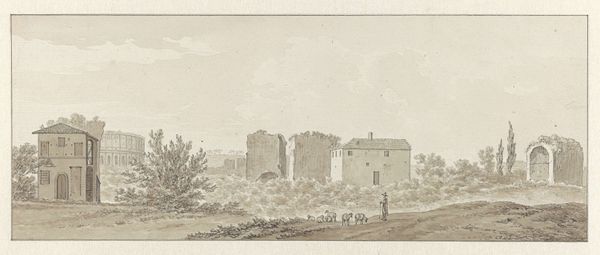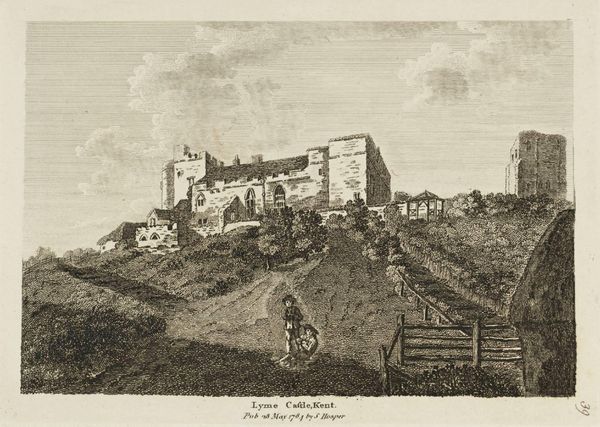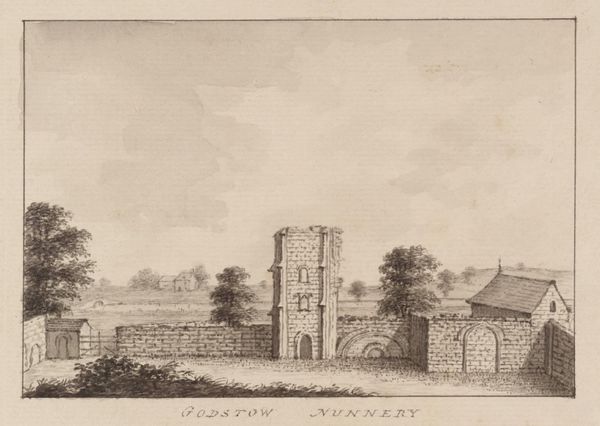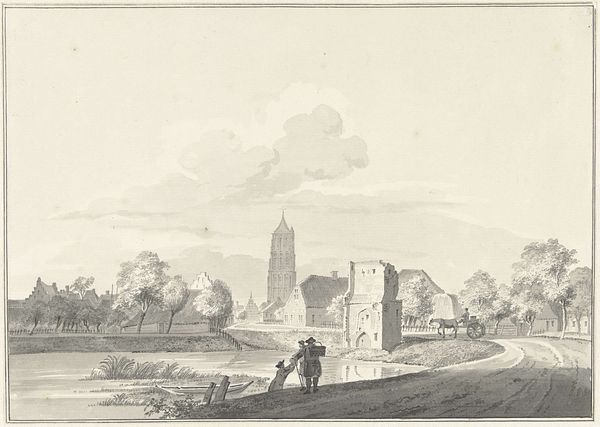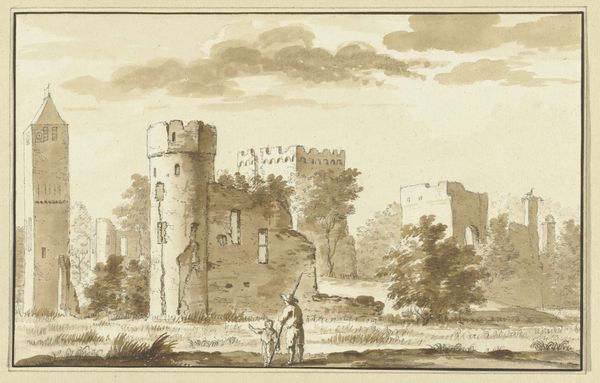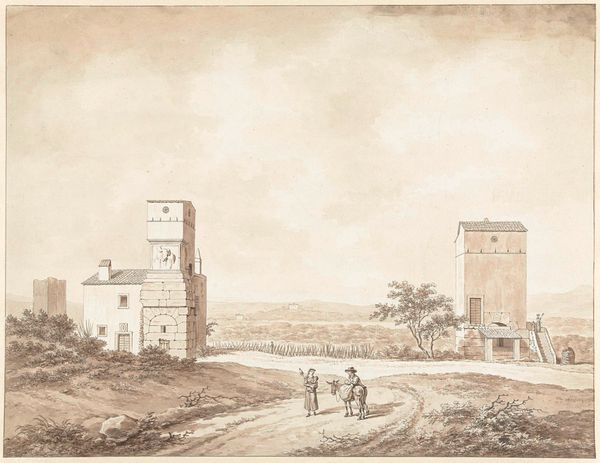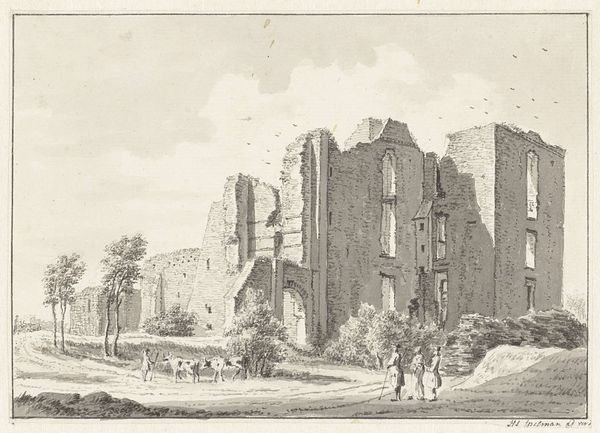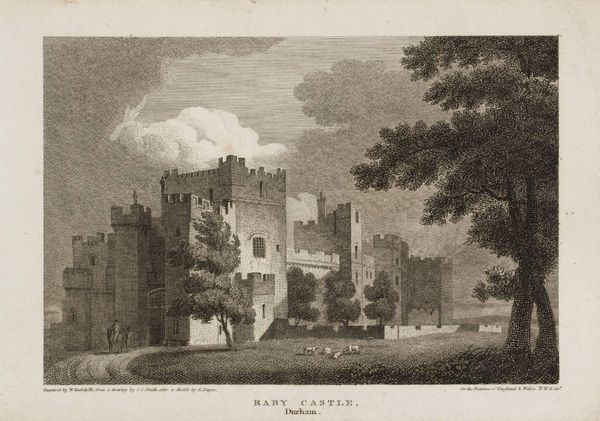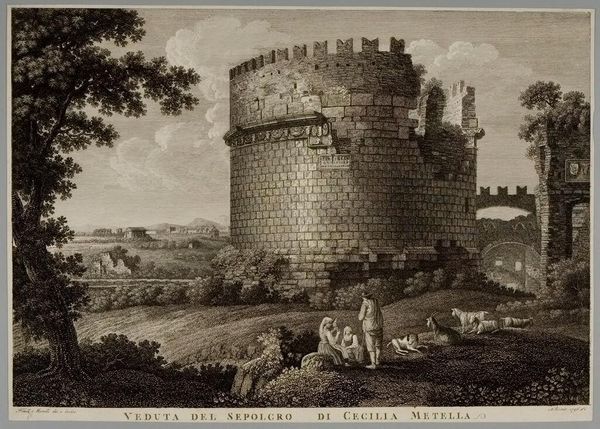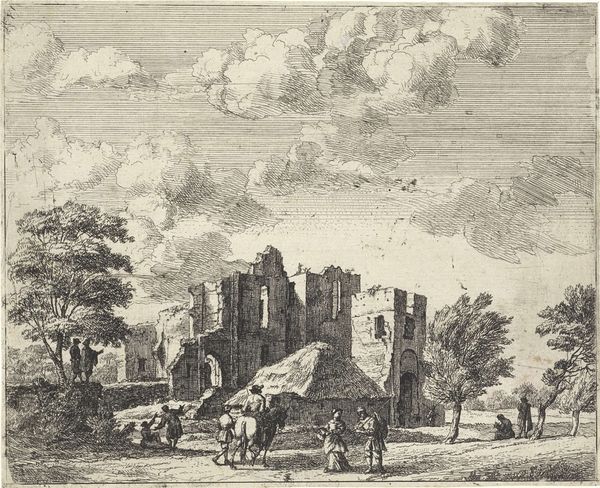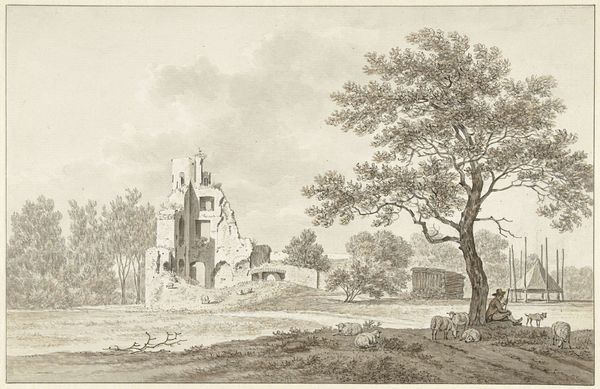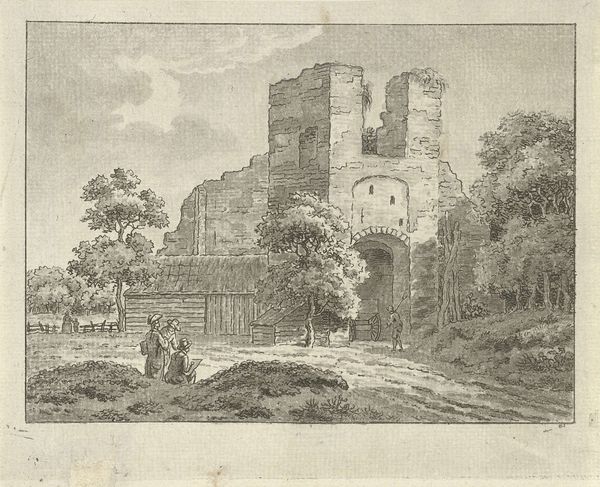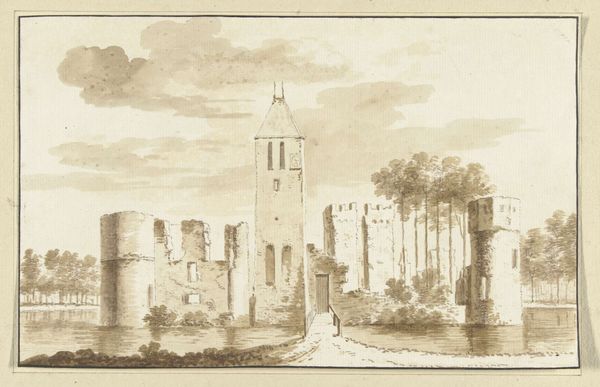
drawing, etching, ink, pen, architecture
#
drawing
#
baroque
#
etching
#
pencil sketch
#
old engraving style
#
landscape
#
etching
#
ink
#
pen-ink sketch
#
architecture drawing
#
pen
#
genre-painting
#
architecture
Dimensions: height 159 mm, width 220 mm
Copyright: Rijks Museum: Open Domain
Curator: This is "Het slot te Abcoude," or "The Castle at Abcoude," a pen, ink, and etching drawing made between 1730 and 1747 by Cornelis Pronk. It is currently held in the collection of the Rijksmuseum. Editor: It strikes me as melancholic, almost faded, doesn't it? The limited palette focuses our attention on form, and the castle itself looms—a solid, geometrical shape. Curator: Indeed. And considering the social role castles played in Dutch history, especially concerning wealth and power, we must ask, whose vision of Abcoude are we seeing here? Pronk worked for wealthy patrons who commissioned views of their estates and properties, which in a way worked as a statement of privilege and territorial power. Editor: Interesting. From a purely visual perspective, notice the delicate interplay of light and shadow across the façade and landscape. The etcher's line is used economically but with significant effect. There's a structural solidity, even austerity, which evokes a specific historical period. Curator: The architectural structure depicted, the castle, becomes a signifier of control. Also notice the rural elements. The way Pronk decided to portray farmers grazing cattle in front of such an imposing construction is also remarkable. How does their everyday existence relate to the social environment imposed by such a monumental structure? Editor: I'm drawn to the way the rays of light break through the clouds. It's almost theatrical, creating a subtle sense of depth that amplifies the structure’s imposing presence, yet is carefully balanced with more delicate details in the foreground like vegetation and water reflections. It has that particular charm that landscape as genre creates, and perhaps its real strength rests in such successful formal contrasts. Curator: Viewing it now, it brings up numerous points regarding who held power, how it was obtained, and what kind of social stratification operated within that period. Editor: Absolutely. This visual architecture and structure—a true window into another era—highlights the visual essence of space and form in a truly compelling manner.
Comments
No comments
Be the first to comment and join the conversation on the ultimate creative platform.
